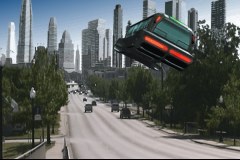 |
Well, that's the big one, isn't it? Everyone wants to know whether there are flying cars or not. Well, yes and no. In general, yes, there are flying cars. But are they common? No. Flying a car takes a specialized license and there are many restrictions. Most flying cars, known as "jumpers" are emergency vehicles; ambulances, police and fire vehicles, and some tow trucks (It cuts down on traffic jams). Outside of these vehicles, the only other typical flying car is a "Skybus." The "Skybus" was instituted as a public service. Replacing the typical taxi, bus and trolly services, "Skybuses" are on-demand public transportation vehicles. They are sometimes called "boats," due to their size and similarity in navigation to seaworthy vehicles. But the general layman's term for them are "jumpers."
|
Most computers are operated by voice command and fit in the typical cellphone. The monitors are projected holograms which are interactive. Files can be opened and moved to other windows by the proper hand motions.
In the late teens, one company conducted experiments by placing CPUs in the brains of a group of test subjects. A port was placed in their hands between the thumb and forefinger. This allowed for a direct connection between the brain and the computers. However, many of the test subject went insane and killed themselves. Others died when the company tried to remove the CPUs. All but four of the original twenty test subjects are dead.
|
 |
 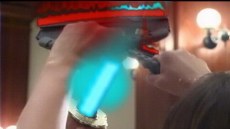 |
With the outlaw of most projectile firearms, people were forced to resort to other weapons. They turned to blades. The bloodshed didn't stop. In fact, it got even more gruesome. Instead of people getting shot, they were getting sliced and mutilated by swords and knives and getting beaten bloody with baseball bats, batons and clubs. In the late 2010's a drug runner from Mexico City discovered the ability to turn energy into a liquid form. He then began harnessing this new form of energy into projectile weaponry. Used in uncontrolled environments, the plasma is deadly to anything it touches. It will practically melt straight through the strongest, most dense metal known to man. But lesser forms of this plasma were devised. In lesser doses and harvested properly, this plasma could either deliver a minor shock, or it could completely vaporize a person in an instant.
|
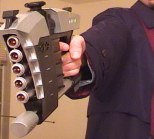 |
PLASMA GUNS
Typical explosive firearms were outlawed and replaced with the less lethal, and more accurate, Energy weapons in the late 2010's. These weapons still use a small amount of explosive materials, like gunpowder with primers, but the majority of the power comes from highly charged batteries, which send a small pellet through the air at its target. The pellet is charged with a high dose of DC current which, upon contact with it's target, will discharge all of its energy into the whole of the subject. These weapons are still lethal in many cases when the charge is not properly set. For instance if a charge is set for a 6' man and fired at a 5' woman, her chances of survival are close to 15%. And since the opposite would be true, a
|
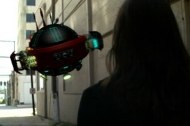 |
In the early twenties, Donovan Enterprises, a major US technology company perfected the "hover plate." It was a metallic plate in which a large electromagnetic current was sent through. Supplied by batteries with power as low as 12V, a 'hover plate' could be powered for months.
It wasn't long until these plate were placed with computerized security drones. The "rent-a-cop" was made obsolete, as so many other jobs, and high security areas and businesses were guarded by these "Hoverdrones." Mostly armed with Phase III Level stun weapons, they quickly became the Watchdog of the new millennium. But don't worry, dog's are still man's best friend.
|
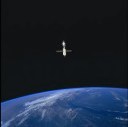 |
With the oil supply all but gone and other natural resources diminishing, new forms of power were needed. Solar power was the best and most economical way to go. However, it was still not delivering enough power to maintain all of the world's power. A Texas scientist devised a new satellite system which would allow satellites with 5 to 10 mile long solar panels collect energy and send it back to earth. It was literally connected to power plants and distribution networks via a 30 foot thick cable that extended from the satellites to the plants on earth. Staying in perfect geosynchronous orbit, these satellites were very reminiscent of kites.
|